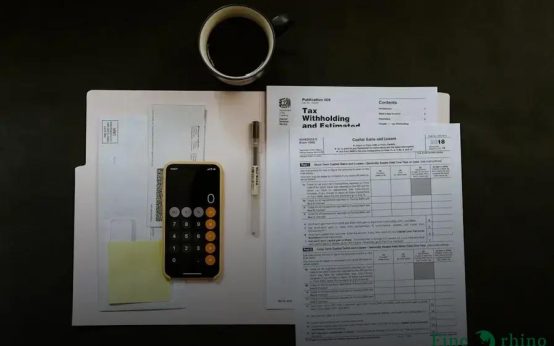Looking to dive into the world of cryptocurrency? Discover the best ways to buy and sell crypto safely. Security is crucial in your crypto journey, and understanding the nuances of transactions, exchanges, and safe storage solutions is essential. In this guide, we’ll walk you through the steps, from choosing the right platform to avoiding scams, ensuring your investments remain protected. Stay informed and secure with our comprehensive advice on crypto safety.
Understanding Crypto Transactions
Crypto transactions involve the exchange of cryptocurrencies between parties. These transactions are recorded on a blockchain, which ensures their security and transparency. Each transaction is confirmed and added to the blockchain through a process called mining.
Public and Private Keys: In crypto transactions, cryptographic keys play a vital role. A public key serves as an address where funds can be received, while a private key enables the owner to access and manage the crypto. Always keep your private key secure, as anyone with access can control your funds.
Transaction Fees: When processing crypto transactions, fees are often paid to miners or validators who help confirm the transaction. These fees vary depending on the network congestion and the speed with which you want the transaction to be processed. It’s crucial to factor in these fees when trading or transferring crypto.
Crypto transactions can be complex due to network-specific details, such as transaction ID, block confirmation times, and gas fees in Ethereum-based transactions. Understanding these elements is essential for successfully managing your crypto investments.
Lastly, always ensure you have
accurate recipient addresses
. Crypto transactions are irreversible; sending funds to the wrong address can result in a permanent loss of assets.
Choosing a Secure Crypto Exchange

When selecting a crypto exchange, prioritize security measures to ensure your digital assets are protected. Look for exchanges that offer two-factor authentication, as this adds an extra layer of security beyond just a password. It’s important to choose exchanges that have a solid reputation and positive user reviews. Also, ensure the platform is compliant with current regulations, providing you with more peace of mind regarding your transactions.
Another critical factor is insurance coverage. Some exchanges offer insurance for funds stored on their platform, which can be crucial in case of any breaches. Evaluate whether the exchange keeps the majority of its funds in cold storage, as this is a widely recognized practice for enhancing security. Analyze the exchange’s past security breaches and resolutions to assess their reliability.
Consider exchanges with a transparent fee structure. Hidden costs can eat into your profits, so understanding the fee schedule beforehand is vital. Look for platforms that offer educational resources and customer support to assist you in making informed decisions.
Utilizing Wallets for Safe Storage
In the world of cryptocurrency, safeguarding your digital assets is paramount. One of the most effective ways to achieve this is by utilizing wallets designed for safe storage. These wallets come in various forms, each offering unique features to protect your crypto assets from unauthorized access and cyber threats.
Hardware Wallets are often hailed as the safest option. These physical devices store your private keys offline, making them immune to online hacks. They are ideal for long-term storage of cryptocurrencies, ensuring that your assets remain secure even if your connected device gets compromised.
Software Wallets, available on both desktop and mobile platforms, provide a balance between security and convenience. While they are connected to the internet and therefore more vulnerable to threats, utilizing strong passwords and enabling two-factor authentication can significantly enhance their security.
Paper Wallets offer a unique cold storage option. By generating and printing an offline paper document containing your public and private keys, you create a physical representation of your crypto holdings. Although they eliminate online threats, keep them safe from physical damage and ensure they’re stored in a secure location.
Understanding the features and functions of each wallet type can help you select the most appropriate method for storing your cryptocurrencies. Ensure you manage backups and updates vigilantly to mitigate risks and maintain access to your assets effectively.
Exploring these wallet types and understanding their differences allows you to make informed decisions about where and how to store your cryptocurrencies safely, forming a crucial part of your crypto security strategy.
Avoiding Common Crypto Scams

Recognizing Red Flags: Always research any potential investment thoroughly. Be cautious of offers that promise high returns with little risk, as these are typical characteristics of scams. If something sounds too good to be true, it probably is.
Secure Communication: Engage with platforms that utilize strong encryption methods. Ensure that any website or platform where you conduct transactions uses HTTPS. This secures your connection and protects data from cybercriminals.
Authenticating Information:
Verify the identities of those you communicate with regarding crypto. Avoid sharing private keys or passwords, as legitimate exchanges and wallets will never ask for this information. Being impersonated online can lead to unauthorized access to your accounts.
Dodge Phishing Attempts: Be wary of unsolicited messages, emails, or any communication prompting you to click links or provide personal information. Scammers often use these tactics to gather sensitive data. Enable two-factor authentication (2FA) wherever possible to add an extra layer of security to your accounts.
Vet ICOs and New Projects: Initial Coin Offerings (ICOs) are popular but some can be fraudulent. Only invest in projects with a clear business plan and genuine utility. Check for transparency regarding the project team and roadmap. Critics and reviews by reputable sources can also provide insight into a project’s legitimacy.
Monitoring for Consistency: Regularly scrutinize your transaction history for any irregular or unauthorized activities. Keeping track of your account statements helps to spot discrepancies early. Some exchanges offer notifications for transactions, which can be an effective way to monitor your crypto activity.





